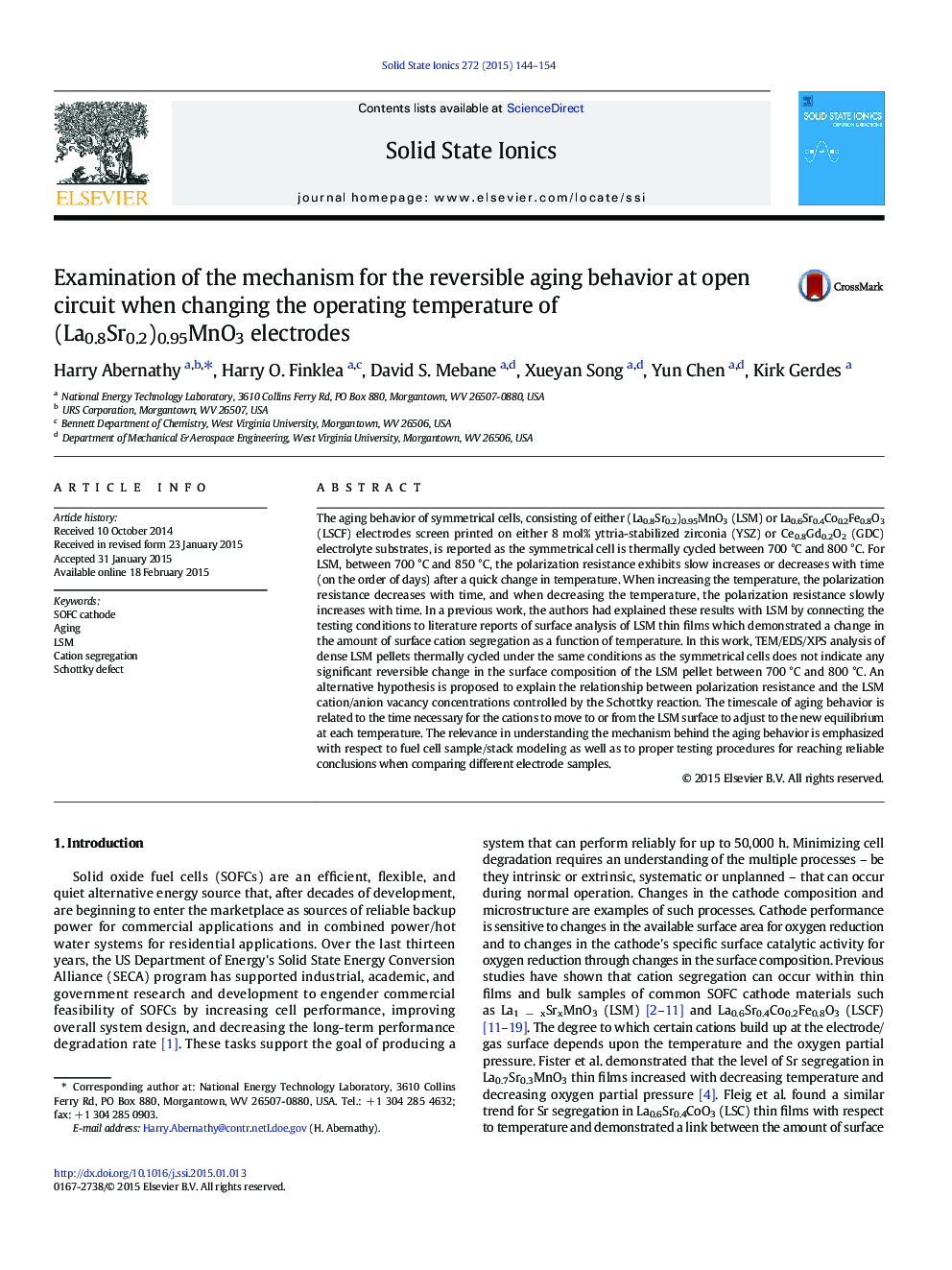| کد مقاله | کد نشریه | سال انتشار | مقاله انگلیسی | نسخه تمام متن |
|---|---|---|---|---|
| 1296333 | 1498271 | 2015 | 11 صفحه PDF | دانلود رایگان |

• Reversible aging behavior of LSM and LSCF was characterized on GDC and YSZ substrates.
• Reversible behavior in LSM comes from changes in surface when temperature changes.
• TEM/EDS reveals no large change in LSM surface cation ratios between 700 and 800 °C.
• Behavior explained by changes in Schottky defect concentrations with temperature
• Testing protocols for evaluating electrode materials must consider aging behavior.
The aging behavior of symmetrical cells, consisting of either (La0.8Sr0.2)0.95MnO3 (LSM) or La0.6Sr0.4Co0.2Fe0.8O3 (LSCF) electrodes screen printed on either 8 mol% yttria-stabilized zirconia (YSZ) or Ce0.8Gd0.2O2 (GDC) electrolyte substrates, is reported as the symmetrical cell is thermally cycled between 700 °C and 800 °C. For LSM, between 700 °C and 850 °C, the polarization resistance exhibits slow increases or decreases with time (on the order of days) after a quick change in temperature. When increasing the temperature, the polarization resistance decreases with time, and when decreasing the temperature, the polarization resistance slowly increases with time. In a previous work, the authors had explained these results with LSM by connecting the testing conditions to literature reports of surface analysis of LSM thin films which demonstrated a change in the amount of surface cation segregation as a function of temperature. In this work, TEM/EDS/XPS analysis of dense LSM pellets thermally cycled under the same conditions as the symmetrical cells does not indicate any significant reversible change in the surface composition of the LSM pellet between 700 °C and 800 °C. An alternative hypothesis is proposed to explain the relationship between polarization resistance and the LSM cation/anion vacancy concentrations controlled by the Schottky reaction. The timescale of aging behavior is related to the time necessary for the cations to move to or from the LSM surface to adjust to the new equilibrium at each temperature. The relevance in understanding the mechanism behind the aging behavior is emphasized with respect to fuel cell sample/stack modeling as well as to proper testing procedures for reaching reliable conclusions when comparing different electrode samples.
Journal: Solid State Ionics - Volume 272, April 2015, Pages 144–154